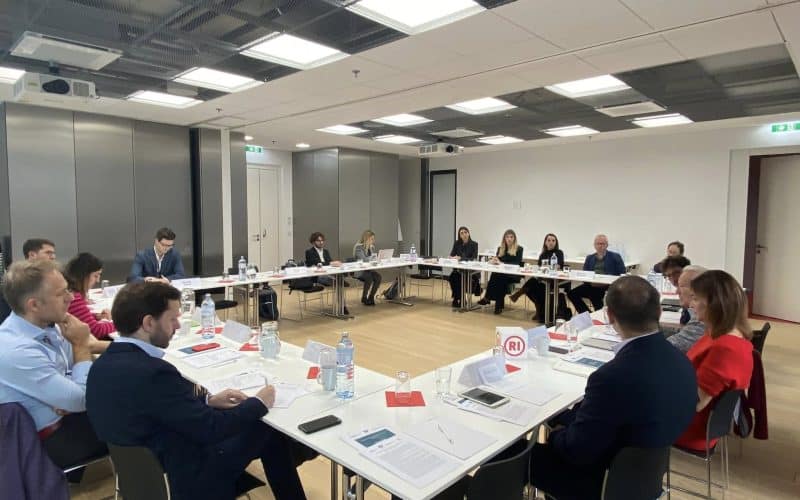Every November 25th marks the beginning of 16 Days of Activism Against Gender-
Based Violence. Although the phrase “against” has long been in use, I prefer the
word “towards,” because, perhaps illusorily, it evokes an image of equality. I choose
to believe that it is possible to escape violence and that society is ready to shed the
shackles of imposed patriarchal values and step toward equality for all members of
our society.
Throughout these 16 days of activism, several important dates will be
commemorated: the International Day for the Elimination of Violence Against
Women, World AIDS Day, the International Day of Persons with Disabilities, the
anniversary of the Montreal Massacre, when we in Serbia remember the victims of
femicide, and finally, Human Rights Day. Every day during this period, we will hear
more than usual about the discrimination of women, violence, and gender inequality.
We will take a brief pause for the holidays, when families gather together, but in
households where violence exists, the holiday atmosphere is far from pleasant-tensions rise, and the risk of further escalation looms. In fact, the first two femicides of the past year occurred on Christmas Day.
After this brief pause, we will revisit the rights and position of women on March 8th
and take another, this time longer, break. The systemic refusal to take responsibility for past events has spilled over into the present, so now, when it comes to violence against women, all we seem to do is flip through tabloids. We are increasingly shocked by the bizarre details of how and why a man has killed or harmed his partner, mother, daughter, or acquaintance.
There are many questions: why violence against women, how is it possible that
violence happens, what exactly constitutes violence, why didn’t she leave earlier,
why didn’t she report it, how do we reintegrate all the women who have survived
violence into society—yet the answers cannot fit into 16 days. They wouldn’t fit into a
year either, because working with people doesn’t involve predetermined protocols
and exact answers. What has been deteriorating for years cannot be fixed in one
day, nor in 16 days.
Data from the global homicide study by the United Nations Office on Drugs and
Crime shows that, although women account for about 19% of all homicide victims,
they represent a much higher percentage of those killed by an intimate or family
partner compared to men—64%.
Violence against women represents a series of violated human rights. It is an abuse
of power for the purpose of control. Violence doesn’t necessarily occur because
someone cannot control their actions or has a mental disorder. Often, the reason is
simply “because they can,” and the system gives it a green light.
Violence does not begin overnight, and it is often difficult to recognize. When we talk
about gender-based violence from the perspective of social responsibility, it is
always preceded by the discrimination of women and girls. These are the situations
that have created fertile ground for violence to go unrecognized: when she was told
it’s not ladylike for a girl to get angry or shout, when she had to cross her legs in a
skirt because that’s how ladies behave, when her ideas were devalued simply
because her classmate had a “better” one, just because he was a boy, when she
thought she was stupid because she wasn’t as good at things where boys excel,
when she couldn’t say “no” because it was assumed to be her duty. Discrimination
encompasses all the situations in which women could not fully realize their potential,
many of them unaware of the rights they were deprived of.
Turning away from violence and deciding that “I will no longer tolerate this” is not
easy. It’s not easy because on the day he attacked her, she wore a short skirt and
didn’t cross her legs. Because she left home to be with him. Because she changed
her faith to be with him. Because she stopped hanging out with all her friends
because he made scenes in public. Because she lost her job as he constantly
checked where she was and showed up at her workplace. Because she stopped
working, as it was her job to take care of the children, and he would take care of
everything else. Because he threatened to commit suicide if she left him. Because
they told her it wasn’t fair for a child to grow up without a father. Because she
believed she was really at fault, because, as we know, “it takes two to fight.”
Because, just like all of us sometimes, she found it difficult to stand up for herself.
And this is a skill that is especially hard to learn in a society that does not nurture
critical thinking and a thirst for truth and justice.
For every woman to return to the life she once had, similar to the one before the
violence—we all need to be involved. It is our responsibility to treat men and
women equally, to step forward and react when we witness violence, to listen to
someone without judgment. It is our responsibility to seek answers to the questions
of why institutions didn’t act differently and to ask how we can help.
The answer to the question “why” is simple—because everyone has the right to
live a life free from violence.

Maja Milosevic
journalist and a student of gender studies at the Faculty of Political Science












